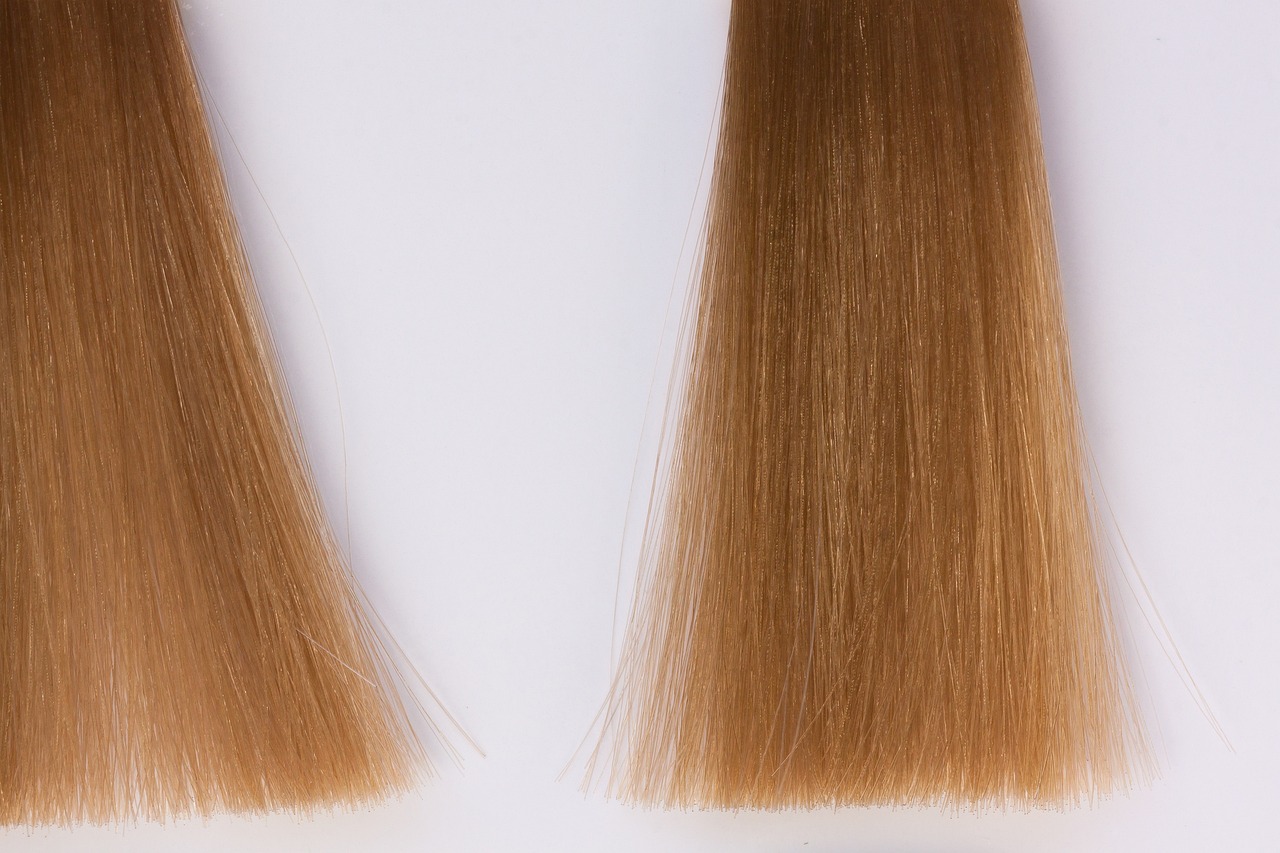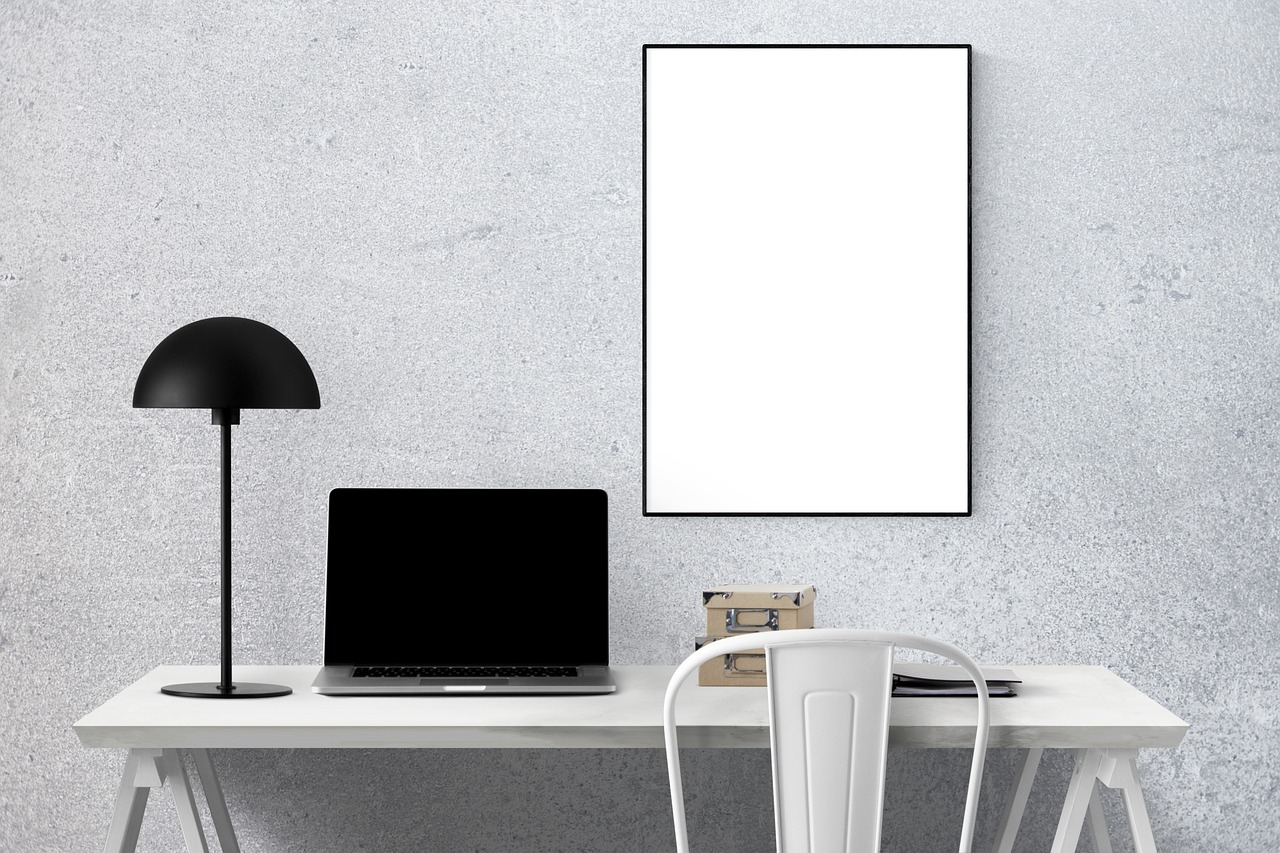The Essential Guide to Quilting Templates
Welcome to the vibrant world of quilting templates! If you're a quilting enthusiast or just starting your journey, understanding these essential tools can elevate your projects to new heights. Quilting templates are not just pieces of plastic or paper; they are the keys to unlocking your creativity and precision in every stitch. Imagine being able to replicate intricate designs with ease or create perfect shapes that align flawlessly. Sounds appealing, right? In this guide, we will dive deep into the various types of quilting templates, their uses, and the benefits they bring to both beginners and seasoned quilters alike. So, grab your fabric and let’s get stitching!
Quilting templates serve a fundamental purpose in the quilting process: they help you create precise shapes and patterns that can transform a simple piece of fabric into a stunning masterpiece. Whether you're working on a complex quilt or a straightforward project, templates can streamline your workflow, allowing you to focus more on your creativity and less on measuring and cutting. For beginners, they offer a reassuring guide, while experienced quilters appreciate the consistency and accuracy they provide. Think of templates as the roadmap to your quilting journey, guiding you through each twist and turn with confidence.
When it comes to quilting templates, variety is the spice of life! There are several types available, each designed to cater to different needs and preferences. Let's explore some of the most common types:
- Acrylic Templates: These clear, durable templates are a favorite among quilters. They allow you to see your fabric placement clearly, making it easier to achieve that perfect cut.
- Cardboard Templates: A more budget-friendly option, cardboard templates can be easily customized and are perfect for quilters looking to experiment without a hefty investment.
- Digital Templates: With the rise of technology, digital templates have become increasingly popular. They offer convenience and flexibility, allowing you to resize and replicate designs effortlessly.
Acrylic templates are the gold standard in the quilting community. Their transparency and durability make them an indispensable tool for quilters of all levels. One of the biggest advantages of using acrylic templates is their ease of use. You can lay them directly over your fabric, ensuring you see exactly where you're cutting. This visibility is crucial, especially when working with intricate designs. Plus, the sturdiness of acrylic means they won't bend or warp over time, allowing for consistent results project after project.
The benefits of using acrylic templates are numerous:
- Precision Cutting: Achieve flawless cuts every time, enhancing the overall quality of your quilt.
- Versatility: Use them for various quilting techniques, from traditional piecing to modern designs.
- Long Lasting: Unlike paper templates, acrylic templates are built to last, making them a worthwhile investment.
When it comes to selecting the right acrylic template, there are several factors to consider:
- **Size:** Make sure the template fits the dimensions of your project.
- **Design:** Choose templates that align with your quilting style and the complexity of your projects.
- **Thickness:** Thicker templates provide more stability, while thinner ones can be easier to manipulate.
If you're looking for a cost-effective option, cardboard templates may be the way to go. They are easy to create and customize, making them perfect for quilters who want to experiment without breaking the bank. Simply cut out your desired shape from cardboard, and you're ready to go! While they may not be as durable as acrylic templates, they can still serve you well for a variety of projects. Plus, if you make a mistake, you can easily make a new one!
In our tech-savvy world, digital quilting templates are gaining popularity, and for good reason! These templates provide a level of convenience that traditional templates simply can't match. With just a few clicks, you can download a design, resize it to fit your project, and print it out. This flexibility allows you to explore your creativity without the limitations of physical templates.
Digital templates come with a unique set of benefits:
- Easy Resizing: Adjust the size of your templates to fit any project.
- Replication: Quickly duplicate designs for multiple projects, saving you time and effort.
- Storage: Keep your templates organized and accessible without taking up physical space.
Using digital templates is straightforward! Here’s a quick step-by-step guide to get you started:
1. Choose a software program that suits your needs (e.g., Adobe Illustrator, EQ8). 2. Download your desired template design from a trusted source. 3. Open the design in your software and adjust the size as necessary. 4. Print the template on paper or directly onto freezer paper for easy cutting. 5. Cut out the template and use it to trace onto your fabric.
1. Can I use regular paper for templates?
While you can use regular paper, it may not hold up as well as acrylic or cardboard. Consider investing in sturdier materials for better results.
2. Are digital templates compatible with all quilting software?
Most digital templates are designed to work with various software, but it's always best to check compatibility before purchasing.
3. How do I store my templates?
Acrylic templates can be stored flat or in a binder, while cardboard templates should be kept in a dry place to avoid bending.
4. Do I need a special printer for digital templates?
No special printer is required, but using a high-quality printer can improve the accuracy of your printed templates.
Now that you have a comprehensive understanding of quilting templates, it’s time to put your knowledge into action. Whether you choose acrylic, cardboard, or digital templates, each option offers unique benefits that can enhance your quilting experience. Happy quilting!

Understanding Quilting Templates
Quilting templates are essential tools for anyone who loves to create beautiful quilt designs. They serve as precise guides that help quilters cut fabric into specific shapes and sizes, ensuring uniformity and accuracy throughout the project. Imagine trying to bake a cake without a recipe; it's possible, but the results might not be what you hoped for! Similarly, quilting without templates can lead to uneven pieces and frustrations. By using templates, both beginners and experienced quilters can streamline their process, making it not just easier but also more enjoyable.
At their core, quilting templates are designed to help you visualize and execute your quilt patterns more effectively. They can be made from various materials, each offering different benefits. For instance, acrylic templates are transparent, allowing quilters to see the fabric underneath, while cardboard templates are lightweight and easily customizable. The choice of template can significantly impact the quality of your work, as well as your overall quilting experience.
One of the key advantages of using quilting templates is their ability to save time. Instead of measuring and marking each piece of fabric individually, you can simply place the template on the fabric, cut around it, and move on to the next piece. This efficiency is particularly beneficial for large projects, where the repetitive nature of cutting can be tedious. Additionally, templates help in maintaining consistent seam allowances, which is crucial for achieving a professional finish. In essence, quilting templates are like a roadmap; they guide you through the intricate paths of your quilting journey.
Moreover, templates can also enhance creativity. With a variety of shapes and sizes available, quilters can experiment with different designs and layouts. For instance, you might find a star-shaped template that inspires you to create a stunning star quilt. By combining various templates, you can unlock endless possibilities and bring your unique vision to life. It's like having a blank canvas where you can paint your dreams with fabric!
In conclusion, understanding the purpose and benefits of quilting templates is crucial for anyone looking to improve their quilting skills. They simplify the cutting process, ensure accuracy, and open up a world of creative opportunities. So, whether you're just starting your quilting journey or looking to refine your skills, consider incorporating templates into your toolkit. You'll be amazed at how they can transform your quilting experience!

Types of Quilting Templates
When diving into the world of quilting, one of the first things you'll notice is the **variety of templates** available. Each type serves a unique purpose, catering to different skill levels and project needs. Understanding these types can significantly enhance your quilting journey, making it smoother and more enjoyable. In essence, quilting templates can be categorized into three main types: Acrylic Templates, Cardboard Templates, and Digital Templates. Let's explore each of these categories in detail!
Acrylic templates are a favorite among quilters. Their transparency allows for easy fabric placement, making them perfect for intricate designs. Imagine trying to cut a complex shape without being able to see the fabric underneath; it would be like trying to navigate a maze blindfolded! Acrylic templates provide clarity, enabling you to achieve precise cuts every time. Moreover, their durability means they can withstand frequent use without losing their shape or effectiveness.
On the other hand, Cardboard templates present an economical choice for those just starting out or for quilters who enjoy customizing their own designs. These templates can be easily made at home, allowing for a level of creativity that’s hard to beat. Picture this: you’re inspired by a unique quilt pattern, but it’s not available in stores. With cardboard templates, you can simply create your own! They are lightweight and can be adjusted as needed, making them a versatile option for various quilting projects.
Lastly, we have the rising star of the quilting world: Digital templates. As technology advances, more quilters are turning to digital solutions for their crafting needs. Digital templates offer the convenience of resizing and replicating designs with just a few clicks. It’s like having a magic wand that can transform your ideas into reality! These templates can be easily printed out and used, saving both time and effort. Plus, they often come with software that allows for even greater creativity and customization.
In summary, understanding the different types of quilting templates—Acrylic, Cardboard, and Digital—can significantly enhance your quilting experience. Each type has its unique features and benefits, allowing you to choose the best fit for your project. Whether you prefer the durability of acrylic, the cost-effectiveness of cardboard, or the modern convenience of digital templates, there’s something for every quilter. So, which one will you choose for your next quilting adventure?

Acrylic Templates
Acrylic templates have become a staple in the quilting community, and it's easy to see why. These transparent tools not only provide durability but also offer a clear view of your fabric placement, making them a favorite among both novice and seasoned quilters. Imagine trying to piece together a beautiful quilt without being able to see how the colors and patterns will interact! With acrylic templates, you can visualize your design before making any cuts, ensuring that your final product is exactly what you envisioned.
One of the standout features of acrylic templates is their precision. When you're cutting fabric, even a slight mistake can throw off your entire project. Acrylic templates are designed to be sturdy and stable, allowing you to cut with confidence. This precision is crucial when working on intricate designs or when you're trying to match patterns. The smooth edges of acrylic templates also make them easier to handle, reducing the risk of slipping while you cut.
Additionally, acrylic templates offer a level of versatility that is hard to beat. They come in various shapes and sizes, catering to a wide range of quilting styles. Whether you're creating traditional blocks or experimenting with modern designs, there’s likely an acrylic template that fits your needs. Some quilters even create custom templates, allowing for unique shapes that can elevate their projects to new heights.
When considering the advantages of acrylic templates, it’s essential to highlight how they can enhance your quilting experience:
- Durability: Unlike cardboard, acrylic templates can withstand repeated use without losing their shape.
- Transparency: The clear material allows for easy alignment and placement of fabric.
- Customizability: You can create your own templates for unique designs, giving you full creative control.
Choosing the right acrylic template can significantly impact your quilting experience. Look for templates that are not only durable but also easy to handle. Consider the thickness of the acrylic; thicker templates tend to be more stable. Additionally, check for templates that come with markings or grid lines, as these can assist in aligning your fabric accurately. The right choice will make your quilting projects smoother and more enjoyable!

Benefits of Acrylic Templates
Acrylic templates are a game-changer in the quilting world, offering a myriad of advantages that can elevate your quilting projects. One of the most significant benefits is their precision. When you're working on intricate designs, having a template that allows for accurate cutting is crucial. Acrylic templates provide a clear outline that helps you cut your fabric with confidence, ensuring that every piece fits perfectly together, much like the pieces of a puzzle. Imagine trying to assemble a jigsaw puzzle with pieces that are misshapen; it just wouldn't work! That's why precision is key in quilting.
Another fantastic feature of acrylic templates is their durability. Unlike cardboard templates that can wear out or warp over time, acrylic templates are built to last. They can withstand the rigors of repeated use, making them a wise investment for both novice and seasoned quilters. You won't have to worry about replacing them frequently, which saves you both time and money in the long run.
Furthermore, acrylic templates are transparent, allowing you to see the fabric placement clearly. This transparency makes it easier to align your fabric accurately, reducing the chances of mistakes. Think of it as having a clear window into your project; you can see exactly what you’re working with, which builds your confidence as you cut and sew. This visibility is especially beneficial when you're layering fabrics or working with busy prints, as it helps you visualize how everything will come together.
In addition to these practical advantages, acrylic templates are also incredibly versatile. They come in a variety of shapes and sizes, allowing you to create a wide range of designs. Whether you're interested in traditional quilt patterns or modern, abstract designs, there's likely an acrylic template that fits your needs. You can even find templates that are specifically designed for certain quilting techniques, such as appliqué or foundation piecing. This versatility opens up a world of creative possibilities, making your quilting experience not only productive but also enjoyable.
Lastly, using acrylic templates can significantly streamline your quilting process. By having a reliable guide for cutting, you can spend less time worrying about measurements and more time enjoying the art of quilting. This efficiency can be particularly beneficial when working on larger projects or when time is of the essence, such as when making quilts for special occasions. The ease of use that acrylic templates provide allows you to focus on what you love most about quilting: the creativity and the joy of bringing your ideas to life.
In summary, acrylic templates offer precision, durability, transparency, versatility, and efficiency. These benefits make them an invaluable tool for any quilter looking to enhance their skills and produce stunning quilts. So, if you haven't yet explored the world of acrylic templates, now is the perfect time to dive in and experience the difference they can make in your quilting journey.

Choosing the Right Acrylic Template
When it comes to selecting the perfect acrylic template for your quilting projects, there are several factors to consider that can make a world of difference in your sewing experience. First and foremost, think about the size of the template. Are you working on a large quilt or a smaller project? The size of the template should correspond to the dimensions of your fabric pieces to ensure a seamless fit. Additionally, consider the design of the template. Some templates feature intricate patterns, while others are more straightforward. Your choice should reflect your skill level and the complexity you’re comfortable handling.
Another crucial aspect is the thickness of the acrylic. Thicker templates tend to be more durable and can withstand repeated use without warping, which is a common issue with thinner options. However, if you're looking for something lightweight and easy to handle, thinner templates might be your go-to. It’s also worth noting the transparency of the acrylic. A clear template allows you to see your fabric placement better, helping you make precise cuts and alignments.
Don't forget to evaluate the edge design of the template as well. Some templates have beveled edges that can help you cut more accurately, while others may have straight edges for simpler shapes. If you’re new to quilting, you might want to start with templates that have more forgiving shapes, which will make your learning curve a bit easier. Finally, consider the brand reputation and customer reviews. Trusted brands often provide high-quality products that can enhance your quilting experience.
To summarize, here are some key points to consider when choosing your acrylic template:
- Size: Match the template size with your project dimensions.
- Design: Choose based on your skill level and desired complexity.
- Thickness: Opt for thicker templates for durability or thinner ones for ease of handling.
- Transparency: Clear templates provide better visibility for precise cutting.
- Edge Design: Beveled edges can enhance cutting accuracy.
- Brand Reputation: Research brands and read reviews for quality assurance.
By carefully considering these factors, you can choose an acrylic template that not only suits your current project but also enhances your overall quilting skills. Remember, the right tool can make all the difference in achieving that perfect quilt!

Cardboard Templates
When it comes to quilting, affordability and flexibility are key, and that’s where shine. These templates are often the unsung heroes of the quilting world, providing a budget-friendly option for both beginners and seasoned quilters. What makes cardboard templates so appealing? For starters, they are incredibly easy to make and customize. You can create them in any shape or size to suit your specific project needs, making them a great choice for experimenting with different designs without breaking the bank.
One of the standout features of cardboard templates is their lightweight nature. Unlike heavier materials, cardboard allows for easy handling, which is especially beneficial when working on larger quilting projects. You can simply trace around the template and cut your fabric with confidence, knowing that your template won't shift or slide around. Plus, if you make a mistake or want to change a design, it's as simple as grabbing a new piece of cardboard and starting over. This adaptability is particularly useful for quilters who love to innovate and try out new patterns.
Another advantage is that cardboard templates can be reused multiple times, making them a sustainable choice for your quilting toolkit. You can store them flat or in a designated folder, ensuring they remain in good condition for future projects. To give you a clearer picture, here’s a quick comparison of cardboard templates against other types:
| Template Type | Cost | Durability | Customization |
|---|---|---|---|
| Cardboard | Low | Moderate | High |
| Acrylic | Moderate | High | Moderate |
| Digital | Variable | Depends on printing | High |
With these templates, you can easily create intricate designs that might seem daunting at first glance. Imagine crafting a stunning quilt featuring complex geometric patterns or beautiful floral motifs—all possible with the help of cardboard templates! Just remember, while they are fantastic for creating unique shapes, they do require some care. Keep them dry and avoid bending them too much to ensure they last.
In summary, cardboard templates are not just a cost-effective solution; they also offer unparalleled flexibility and creativity for quilters of all levels. Whether you’re just starting out or looking to expand your quilting repertoire, these templates can help you bring your ideas to life without the worry of overspending. So, grab some cardboard, a pair of scissors, and let your imagination run wild!

Digital Quilting Templates
In today's fast-paced world, have emerged as a game-changer for both novice and seasoned quilters. These templates leverage technology to simplify the quilting process and open up a realm of creative possibilities. Imagine being able to design, resize, and replicate intricate patterns with just a few clicks! Digital templates not only save time but also enhance precision, making them an essential tool in any quilter's toolkit.
One of the most significant advantages of digital quilting templates is their convenience. You no longer have to rely solely on physical templates that can wear out or become damaged over time. With digital templates, you can easily store and retrieve your designs on your computer or tablet. This means that your favorite patterns are always at your fingertips, ready to inspire your next quilting project.
Digital templates come in various formats, including PDF and SVG, allowing you to choose the one that best suits your needs. For instance, PDF templates can be printed directly onto your fabric or paper, while SVG templates can be used with cutting machines for precise cuts. This adaptability makes digital templates a versatile option for all kinds of quilting projects, from simple patchwork to complex designs.
Moreover, digital quilting templates allow for easy customization. Have you ever wished to tweak a design just a little bit? With digital templates, you can adjust the size, shape, and even the details of your patterns without the hassle of redrawing everything by hand. This flexibility not only enhances your creativity but also means you can tailor your projects to fit specific needs, whether it’s a unique gift or a personal quilt that tells your story.
To get started with digital quilting templates, you’ll need some basic tools. Here’s a quick rundown of what you’ll want to have:
- A computer or tablet with design software
- A printer (if you’re using paper templates)
- A cutting machine (for SVG templates)
- Quality fabric and tools for sewing
Once you have your tools ready, using digital templates is straightforward. Most software options come with user-friendly interfaces that guide you through the process of importing, resizing, and printing your templates. For instance, you can create your design in a program like Adobe Illustrator or use free software like Inkscape. After finalizing your design, simply print it out, or if you're using a cutting machine, upload the file directly for cutting. This step-by-step approach streamlines the entire quilting process.
In summary, digital quilting templates are revolutionizing the way we approach quilting. They provide unparalleled convenience, flexibility, and precision, making them a must-have for anyone looking to enhance their quilting skills. So, whether you're a beginner eager to learn or an experienced quilter looking to refine your craft, embracing digital templates could be the key to unlocking your creative potential.
1. What software do I need to use digital quilting templates?
You can use various software options, including Adobe Illustrator, Inkscape, or even specialized quilting software. Choose one that fits your comfort level and budget.
2. Can I use digital templates with any cutting machine?
Most digital templates are compatible with popular cutting machines like Cricut and Silhouette. Just ensure that the file format is supported by your machine.
3. Are digital templates more expensive than traditional templates?
Digital templates can vary in price, but many are available for free or at a lower cost than physical templates. Plus, the ability to reuse them makes them a cost-effective choice in the long run.
4. How do I print digital templates?
You can print digital templates using a standard printer. Just make sure to set the correct paper size and scale in your printer settings to ensure accurate sizing.

Advantages of Digital Templates
In the evolving world of quilting, digital templates have emerged as a game-changer for both novice and seasoned quilters alike. Gone are the days of struggling with paper patterns or spending hours measuring and cutting fabric by hand. With digital templates, you can unlock a treasure trove of benefits that not only enhance your creativity but also streamline your quilting process.
One of the most significant advantages of digital templates is their flexibility. Unlike traditional templates, digital designs can be easily resized and adjusted to fit your specific needs. Whether you're working on a large quilt or a small patchwork project, you can modify the dimensions of your templates with just a few clicks. This adaptability means you can experiment with different styles and designs without the fear of wasting materials. Imagine being able to create a stunning quilt that perfectly fits your space, all thanks to the customizable nature of digital templates!
Moreover, digital templates can be stored and organized on your computer, allowing for easy access whenever inspiration strikes. You can create a library of your favorite designs, making it simple to revisit and reuse them for future projects. This digital storage not only saves physical space but also ensures that your templates are safe from wear and tear. Think of it as having a virtual quilt studio at your fingertips!
Another noteworthy advantage is the efficiency that digital templates bring to the quilting process. With the right software, you can quickly print out your templates, eliminating the tedious task of tracing and cutting from paper. Additionally, many digital templates come with built-in guidelines that help you align your fabric pieces accurately, enhancing your overall precision. This means less time spent on preparation and more time enjoying the creative aspects of quilting.
Furthermore, the creative potential unlocked by digital templates is immense. Many quilters find that using digital designs inspires them to try new patterns and techniques they might not have considered before. With the ability to easily replicate and modify designs, you can create unique, one-of-a-kind quilts that reflect your personal style. Imagine the joy of surprising your friends and family with custom quilts that showcase your artistic flair!
To summarize, the advantages of digital templates in quilting are numerous and impactful:
- Flexibility: Easily resize and adjust templates to fit any project.
- Organization: Keep a digital library of designs for easy access.
- Efficiency: Save time with quick printing and accurate alignment.
- Creativity: Explore new patterns and techniques with ease.
In conclusion, digital templates are not just a convenience; they are a revolutionary tool that can elevate your quilting game to new heights. With their multitude of benefits, it's no wonder that quilters everywhere are embracing this technology. So why not take the plunge and explore the world of digital templates? Your next quilting masterpiece could be just a click away!
Q: What software do I need to create or use digital templates?
A: There are several software options available, such as Adobe Illustrator, EQ (Electric Quilt), and various quilting-specific apps that allow you to create and manipulate digital templates.
Q: Can I use digital templates with my existing quilting tools?
A: Absolutely! Digital templates can be printed and used with traditional quilting tools like rotary cutters and rulers, making them a versatile addition to your quilting toolkit.
Q: Are digital templates suitable for all types of quilting?
A: Yes! Digital templates can be used for various quilting styles, from patchwork to appliqué and beyond. They offer flexibility for any quilting project you may have in mind.

Using Digital Templates
In today's fast-paced world, quilting enthusiasts are increasingly turning to digital templates for their convenience and versatility. But how exactly do you use these modern tools to elevate your quilting game? First things first, you'll need to select the right software that suits your needs. There are various options available, ranging from free programs to more advanced software that offers extensive features. Some popular choices include Adobe Illustrator, EQ8 (Electric Quilt), and Canva. Each of these platforms allows you to create or modify quilt designs with ease.
Once you've chosen your software, the next step is to create or import your desired pattern. Most programs allow you to either draw your design from scratch or upload an existing image. This flexibility means you can customize your templates to fit your unique quilting style. After you've finalized your design, it's time to print it out. Make sure to adjust the print settings to ensure the template is at the correct size. Many quilting designs require precise measurements, so double-checking your scale is crucial to avoid any mishaps during the cutting process.
After printing, the fun part begins: cutting out your templates! Use a sharp pair of scissors or a rotary cutter for clean edges. If you're using heavier fabric, consider using a cutting mat to protect your surfaces and ensure accuracy. Some quilters even opt to laminate their templates for added durability, especially if they plan to use them multiple times. This step not only prolongs the life of your templates but also makes them easier to handle when tracing onto fabric.
Now that you have your templates ready, lay them on your fabric and use a fabric marker or chalk to trace around the edges. This is where the transparency of digital templates shines, as you can see the fabric underneath, ensuring precise placement. Once you've traced your shapes, remove the templates and begin cutting your fabric pieces. Voila! You're well on your way to creating your next masterpiece.
To summarize, using digital templates can significantly enhance your quilting experience. They provide flexibility, precision, and the ability to easily replicate designs. If you're ready to dive into the world of digital quilting, remember these key steps:
- Select the right software for your needs.
- Create or import your desired pattern.
- Print your template at the correct size.
- Cut out your templates carefully.
- Trace onto fabric and cut your pieces.
By following these steps, you'll not only streamline your quilting process but also unleash your creativity like never before. So grab your computer, fire up that software, and let the digital quilting adventure begin!
Q: What software is best for creating digital quilting templates?
A: The best software depends on your skill level and needs. Popular choices include Adobe Illustrator for advanced users, EQ8 for dedicated quilters, and Canva for beginners.
Q: Can I resize digital templates?
A: Yes! One of the fantastic features of digital templates is that you can easily resize them to fit your project requirements without losing quality.
Q: Do I need special equipment to use digital templates?
A: While a computer and printer are essential, having a cutting mat and rotary cutter can enhance your cutting precision. Lamination is optional but recommended for durability.
Frequently Asked Questions
- What are quilting templates and why are they important?
Quilting templates are tools that help you create precise shapes and patterns in your quilting projects. They are important because they streamline the quilting process, allowing both beginners and experienced quilters to achieve accurate results with less hassle. Think of them as the blueprint for your quilt—without them, you might end up with a design that doesn't quite fit together!
- What types of quilting templates are available?
There are several types of quilting templates, including acrylic, cardboard, and digital templates. Acrylic templates are favored for their durability and transparency, while cardboard templates offer a more budget-friendly option. Digital templates are gaining popularity due to their convenience and versatility, allowing quilters to easily resize and replicate designs. Each type has unique features that cater to different quilting needs.
- How do I choose the right acrylic template for my project?
Choosing the right acrylic template can make a huge difference in your quilting experience. Consider factors like the size of your project, the complexity of the design, and your personal skill level. It’s also helpful to think about how often you’ll use the template—if it’s a design you’ll use repeatedly, investing in a high-quality acrylic template is worth it!
- What are the benefits of using digital quilting templates?
Digital quilting templates offer a range of benefits, including the ability to easily resize and replicate designs. They can save you time and effort, as you can print them out as needed. Additionally, digital templates often come with software options that allow for customization, giving you creative freedom to modify patterns to suit your style. It's like having a personal design assistant right at your fingertips!
- Can I customize cardboard templates for my quilting projects?
Absolutely! One of the great things about cardboard templates is their customizability. You can easily cut them into different shapes or sizes to fit your specific quilting needs. This makes them a fantastic option for quilters who like to experiment and create unique designs without breaking the bank!
- How do I use digital quilting templates effectively?
Using digital quilting templates is pretty straightforward. First, you'll need to choose the right software for your design. Once you have your template ready, print it out on suitable paper, and then cut it out carefully. Make sure to follow the instructions provided with the template for the best results. It's like following a recipe—just a little bit of prep work goes a long way!



















